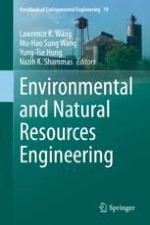This volume has been designed to serve as a natural resources engineering reference book as well as a supplemental textbook. This volume is part of the Handbook of Environmental Engineering series, an incredible collection of methodologies that study the effects of resources and wastes in their three basic forms: gas, solid, and liquid. It complements two other books in the series including "Natural Resources and Control Processes" and "Advances in Natural Resources Management". Together they serve as a basis for advanced study or specialized investigation of the theory and analysis of various natural resources systems.
This book covers many aspects of resources conservation, treatment, recycling, and education including agricultural, industrial, municipal and natural sources. The purpose of this book is to thoroughly prepare the reader for understanding the available resources, protection, treatment and control methods, such as bee protection, water reclamation, environmental conservation, biological and natural processes, endocrine disruptor removal, thermal pollution control, thermal energy reuse, lake restoration, industrial waste treatment, agricultural waste treatment, pest and vector control, and environmental engineering education. The chapters provide information on some of the most innovative and ground-breaking advances in environmental and natural resources engineering from a panel of esteemed experts.
